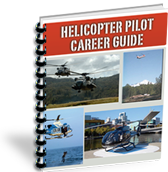Helicopter Pilot Careers In Aerial Fire Fighting
Aerial fire fighting is probably one of the most exciting types of flying a helicopter pilot can have. Aerial fire fighting helicopter pilots battle mostly forest fires but they're have been instances where helicopters ere used to battle fires in skyscrapers. Aerial fire fighting helicopter pilots are the busiest In the late spring, summer, and early fall months as those months are the prime fire season and their services are needed to prevent the spread of fires and to protect property.
Aircraft are the ideal platform to battle blazes in remote locations. An aircraft can be dispatched and attack a small fire before its able to grow. Aircraft are also ideal when fighting a specific portion of a larger fire. Their accuracy and ability to travel long distances quickly also make them suitable platforms to initiate a fire break.
Aerial fire fighting missions often resemble military missions. There will be a lead aircraft that acts as a forward air controller (fac). As mission requests from fire fighters on the ground come in, the lead plane assigns the fire fighting aircraft which is best suited for the mission and will often lead the tanker in to show the best route in and out.
Helicopters are make excellent great fire fighting aircraft because they can hover over a spot and accurately deliver their load of retardant or water. If the fire begins to threaten heavily populated areas the helicopters precision makes them an invaluable tool.
Almost any helicopter can be retrofitted with a bucket to fight fires but there are two that are purpose built.
The Erickson S-64 Aircrane, which is in service worldwide, is probably the most famous airborne fire fighter. Sikorsky originally built the Aircrane. Erickson purchased the manufacturing rights in the early nineties and has since been modifying and upgrading the aircraft. The S-64 has a crew of two pilots and there is a seat for a rearward facing observer. The S-64 is able to refill its tanks from pools, ponds, lakes, rivers, and other water sources. The Aircrane incorporates a ram scoop that it uses to fill its tanks in less than 45 seconds. It also has a snorkel, which allows it to hover above a water source to fill its tanks. The S-64 holds a total of 2,650 gallons of water or retardant.
Another interesting helicopter is the Kaman Firemax. One pilot flies the Firemax. It uses a snorkel to fill its 700 gallon tank and is able to fill it in 23 seconds. The Firemax was derived from the Kaman K-max which is the helicopter equivalent of an aerial truck/crane. The K-max was designed for logging and construction work, Jobs where the ability to lift heavy loads are critical. Because of this, the Firemax is particularly useful at higher elevations (such as in the mountains) because it doesn't’t suffer as much of a loss in lifting capacity as other aircraft.
Aerial fire fighting helicopter pilots usually work six months a year (during the fire season), which leaves them time to pursue other interests. During the fire season they are mostly away from home for extended periods of time. Air attack pilots can make upwards of $80,000 for six months work.
Pilots who fly aerial fire fighting helicopters say there is nothing else they’d rather be doing. It’s challenging, exciting, and they get to have six months off.
Get our free guide and take a look at the numerous career opportunities available in commercial/government helicopter aviation.
Just fill out your name and e-mail address in the boxes below.